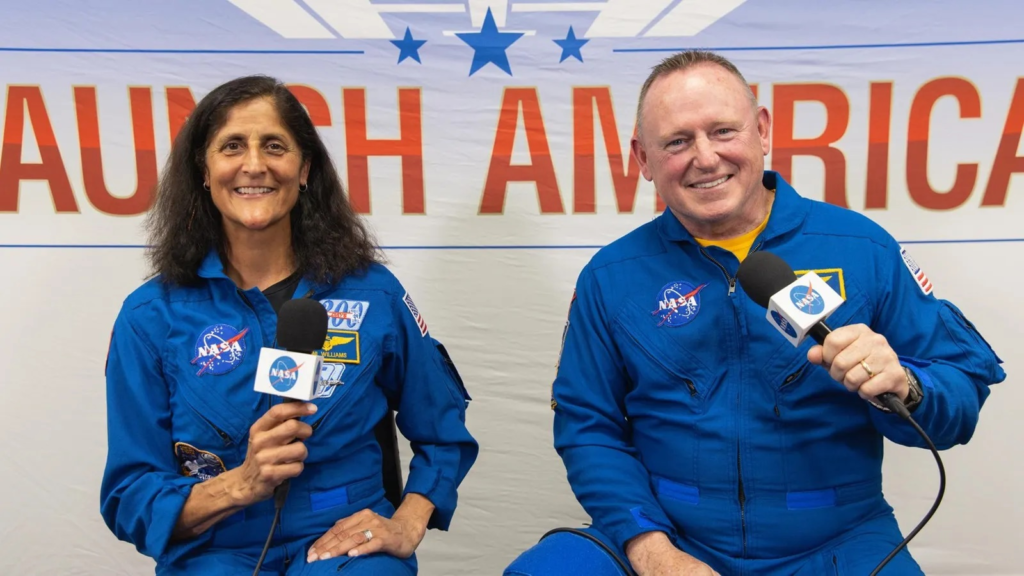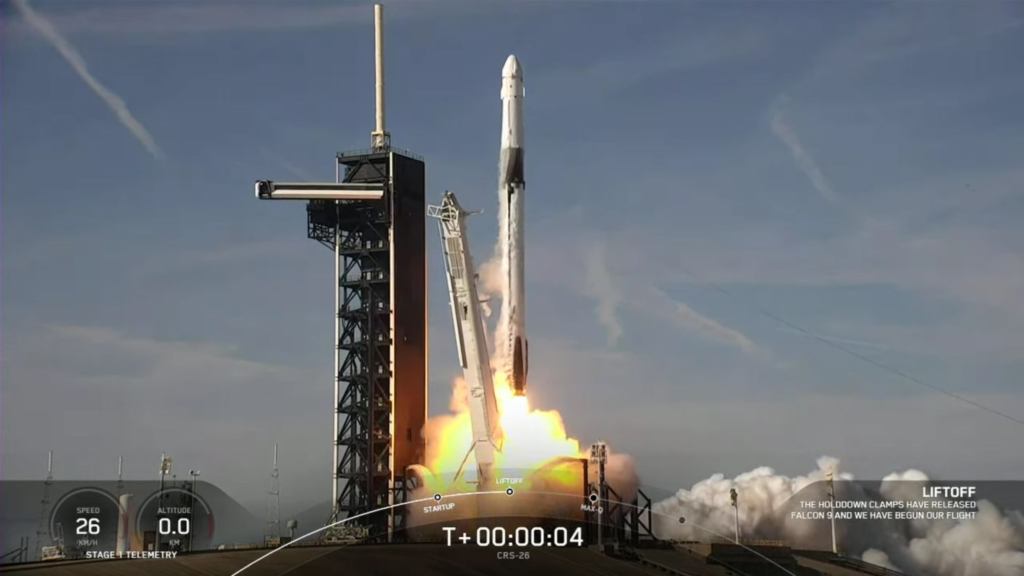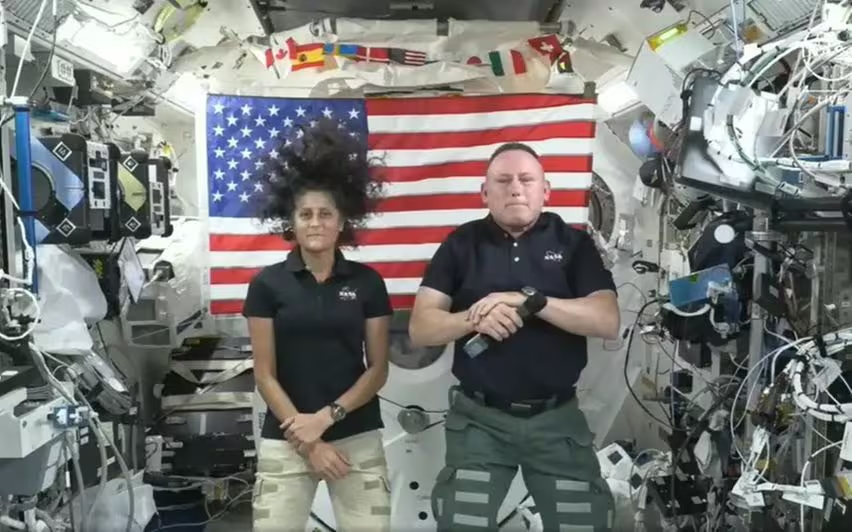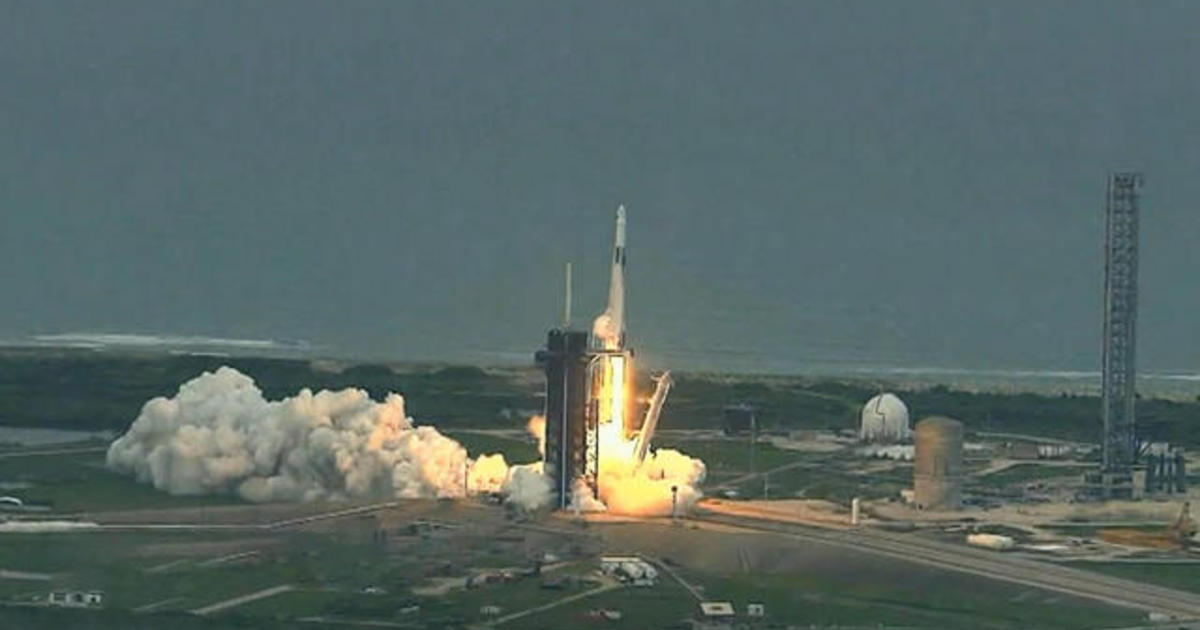Sunita Williams and Butch Wilmore, two veteran astronauts, are currently stranded on the International Space Station (ISS), awaiting their much-anticipated return to Earth. The rescue mission has finally been launched by SpaceX, marking another critical moment in the history of space exploration.
The launch, a significant event for both NASA and SpaceX, not only aims to bring these astronauts back but also signifies the collaborative effort between nations and private companies to push the boundaries of space travel. Sunita Williams and Butch Wilmore have been stuck in space longer than planned, and their return is highly awaited.
The Falcon 9 rocket, SpaceX’s reliable workhorse, took off from Cape Canaveral, Florida, using a brand-new launch pad designed specifically for crewed missions.
This particular mission includes NASA astronaut Nick Hague and Russian cosmonaut Alexander Gorbunov, who are expected to spend the next five months aboard the ISS.
Read : Damaged Starliner Lands on Earth Without Sunita Williams: Watch
What makes this mission special is that two seats were left empty on this launch to accommodate the return of Sunita Williams and Butch Wilmore, marking the significance of the rescue mission.
The Falcon 9 Launch and Crew Details
The Falcon 9 rocket is well known for its reliability and reusability, and it continues to be SpaceX’s go-to vehicle for space missions. On this particular mission, SpaceX has once again proven its capability to execute complicated spaceflights.
Falcon 9 launches Crew-9, the first human spaceflight mission to launch from pad 40 in Florida pic.twitter.com/BYpPPtaKqm
— SpaceX (@SpaceX) September 28, 2024
NASA’s decision to involve SpaceX in this mission highlights the growing reliance on the private company to handle critical aspects of space exploration. With Sunita Williams and Butch Wilmore waiting aboard the ISS, the crewed Falcon 9 mission becomes more crucial.
Nick Hague, the NASA astronaut onboard this mission, and Alexander Gorbunov, the Russian cosmonaut, represent international collaboration in space. This unity between the U.S. and Russia underscores the importance of shared missions in space exploration, especially when human lives, like those of Sunita Williams and Butch Wilmore, are at stake.
NASA Chief Bill Nelson expressed his congratulations via X, stating, “Congrats to @NASA and @SpaceX on a successful launch. We live in an exciting period of exploration and innovation in the stars.”
The mission, he added, is not just a regular rotation but also a rescue operation for Sunita Williams and Butch Wilmore, making it unique.
Starliner’s Technical Challenges
The rescue mission was necessitated by unforeseen technical difficulties with Boeing’s Starliner spacecraft, which initially transported Sunita Williams and Butch Wilmore to the ISS.

The Starliner, designed to rival SpaceX’s Dragon spacecraft, faced significant propulsion system issues and helium leaks, making it too risky for the astronauts’ return journey. NASA, after thorough consideration, decided to use SpaceX’s Falcon 9 to bring Sunita Williams and Butch Wilmore back to Earth safely.
The Starliner’s issues forced NASA to make a radical change in its plans. Originally, Sunita Williams and Butch Wilmore were only supposed to spend eight days on the ISS.
However, due to technical problems, their stay was extended indefinitely. NASA’s decision to prioritize safety and opt for Falcon 9 to handle their return showcases the unpredictable nature of space missions and the need for flexibility in space operations. The safety of astronauts like Sunita Williams and Butch Wilmore is always paramount, and NASA’s careful planning reflects that.
Crew-9’s Scientific Mission and Delays
While the focus of this mission is on returning Sunita Williams and Butch Wilmore, Crew-9’s broader mission includes conducting approximately 200 scientific experiments aboard the ISS.
The experiments range from studying the effects of microgravity on the human body to examining new technologies that could benefit future missions to Mars and beyond.
Nick Hague and Alexander Gorbunov will be central to these experiments, which will contribute to our understanding of space and its potential for human exploration.
Crew-9’s launch, originally scheduled for mid-August, faced delays due to the need for NASA experts to thoroughly assess Boeing’s Starliner’s reliability.

These delays were further compounded by Hurricane Helene, which struck Florida, pushing the launch date to late September. Despite the delays, the mission was eventually cleared for liftoff, marking a crucial moment for both NASA and SpaceX.
The Dragon capsule, part of SpaceX’s Crew-9 mission, is scheduled to dock with the ISS on Sunday around 21:30 GMT (3:00am IST). After the handover period, Crew-8’s four members will return to Earth aboard another SpaceX Dragon vessel.
The intricate coordination of these missions highlights the complexity of modern space travel, where every detail must be meticulously planned to ensure success.
The Long-Awaited Return of Sunita Williams and Butch Wilmore
The return of Sunita Williams and Butch Wilmore has been eagerly anticipated, both by their families and the scientific community. Their extended stay on the ISS, which has now lasted for months, has only added to the challenges faced by NASA and SpaceX in ensuring their safe return.
Sunita Williams, a veteran astronaut, has always been a symbol of resilience and determination, while Butch Wilmore’s long career in space exploration has made him one of the most experienced astronauts in NASA’s history.
Sunita Williams and Butch Wilmore were supposed to return to Earth long ago, but the problems with Boeing’s Starliner extended their stay far beyond the original timeline.
The delays and technical issues have only heightened the anticipation surrounding their return. SpaceX’s Falcon 9 mission now carries the immense responsibility of bringing these two astronauts back safely, and their safe return will mark a significant achievement for both NASA and SpaceX.
The decision to cut two astronauts from the Falcon 9 mission to accommodate Sunita Williams and Butch Wilmore underscores NASA’s commitment to ensuring their safety.
This adjustment in the mission parameters further demonstrates the flexibility and adaptability of modern space missions, where human lives take precedence over all other considerations.

As the mission progresses, all eyes will be on the successful return of Sunita Williams and Butch Wilmore. Their journey back to Earth will serve as a reminder of the unpredictable nature of space exploration and the incredible human spirit that drives these missions forward.
The Future of Space Exploration
The successful return of Sunita Williams and Butch Wilmore will not only mark the end of their extended mission but also symbolize the continued advancements in space travel. SpaceX’s role in this mission, along with its regular ISS crew rotations, shows how private companies are increasingly taking the lead in space missions.
Sunita Williams and Butch Wilmore will soon be back on Earth, but their story serves as a testament to the dedication and innovation driving humanity’s quest to explore the stars.
As space exploration advances, missions like these will become more common, with private companies like SpaceX working alongside NASA to ensure the success of both manned and unmanned spaceflights.
The return of Sunita Williams and Butch Wilmore will mark yet another chapter in the ever-evolving story of space exploration.
let’s enjoy few years on earth with peace and happiness….✍🏼🙏

